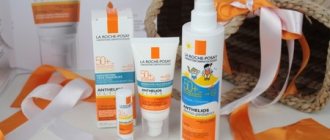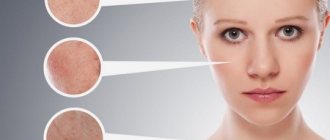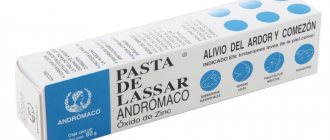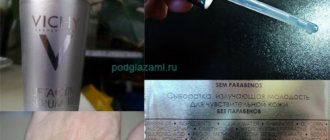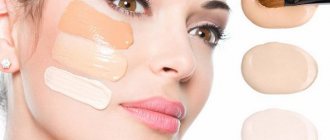Have you ever wondered how and where it is better to store face creams at home? The conditions in which you keep the jars and bottles determine how long you can use their contents. The effectiveness of the formulations is also related to this factor. How to prevent fresh cosmetics from going to waste?
The first thing to do is read the label. Usually, in addition to the components, it indicates the optimal storage methods and expiration date. Follow these guidelines. But if they are not completely given or have been erased, and you want to find out whether you can continue to use the product, be guided by the following rules.
- Suitable temperature is from 15 to 25 degrees.
- The best purchase option is small quantities. Most often, the product remains suitable for no longer than 12 months after opening.
- Place a sticker on the jar with the opening date.
- Use a special spatula or spatula.
- Always wash your hands thoroughly before performing skincare procedures.
- Regularly clean makeup tools that come into contact with mixtures and the neck of the tube.
- Do not carry jars in your purse, especially in hot or cold weather.
- Close the packaging well to prevent dust, excess moisture and air from getting into it.
- Do not replace the factory packaging with your own.
- Do not throw away the extra plastic lid; it serves to protect the contents of the container.
- Give preference to samples with a dispenser. They retain their properties longer and dirt does not get into them.
Features of storing products with different compositions
Depending on the substances contained in the product, the place and time of their storage is determined. You definitely need to pay attention to this, since organic, conventional and natural cosmetics, under equal conditions, will behave differently.
Moisturizing compositions, due to the presence of glycerin, lipids and amino acids in them, are less demanding than other products. The listed components do not deteriorate when exposed to air. But the rules of hygiene - do not take the mixture with your hands - still need to be observed.
Products with tea tree essential oil, zinc, and fruit acids are intended for problem skin and should be kept in a dark, cool place. Be sure to screw the lid on tightly as the ingredients oxidize when exposed to oxygen. The same goes for matte foundations.
Expiration date of face cream
First of all, always pay attention to the packaging. Usually the number of years during which its contents retain their properties is indicated on the bottom of the jar. This data applies to unopened containers. Once you open it, the life of the mixture is shortened. Experts advise using it no longer than a year. All this is true when we talk about formulations with preservatives. If natural ingredients occupy the majority of them, the time for use becomes even shorter, up to 2-3 months if we are talking about ampoule cosmetics or those enriched with vitamin A, C.
Remember that expired cream is not a harmless thing. Expiration dates for products are given for a reason! The easiest thing that can happen is pimples and rashes on the face or loss of function. For example, sunscreen sprays become almost useless by the next summer season. Other consequences include allergies, eczema, dermatitis, conjunctivitis, painful irritation and even intoxication. Of course, the last option is unlikely, but you shouldn’t risk the beauty and health of your skin. As soon as you notice the slightest change in color, smell, or consistency, get rid of the product.
At what temperature should different creams be stored and depending on the time of year?
The main recommendation is not to leave purchases in a room with temperature changes, excessive humidity and bright light. It is better to choose a chest of drawers, the bottom shelf in the closet, or a special container with compartments. For the hot season, there are beauty refrigerators that you can even take with you on the road. There are convenient compartments inside this case. Outside there is a screen on which you can set the appropriate mode.
As for seasonality, dermatologists give one piece of advice - buy as much as you can spend in the near future. This way you won’t have to save numerous tubes from the heat. But this is not always possible, so often girls still use the most accessible source of cold in the apartment.
Can face creams be stored in the refrigerator?
It is not recommended to keep regular skincare cosmetics at low temperatures, as it can be no less harmful to them than high temperatures. This especially applies to products that contain oils. It is better to leave it in the room, in a cool, dark place.
The exception is a product prepared independently. If you made a facial product from natural ingredients, its shelf life is no more than a week if stored in a cool place. Organic mixtures purchased in the store contain up to 95% natural substances. Everything else is preservatives, so low temperatures are not necessary for them. Read the label carefully. Most products indicate what you can and cannot do with them.
Makeup artists advise putting serums for the area around the eyes in the freezer. But this needs to be done a few minutes before application. This life hack helps get rid of puffy eyelids and reduce bags and dark circles.
Where else should you not store creams?
In fact, there are enough places in apartments where you shouldn’t keep cosmetics for your face and body. And the first of them is exactly the one in which girls like to leave numerous jars and bottles. This is the bathroom. In most cases, this is convenient, since some products must be applied to damp skin. But still, it would be better to bring them with you and then put them back. This is due to the high humidity in this room and stuffiness. Under such conditions, even products with preservatives will deteriorate faster than they could.
Next on the list of bad places for a makeup bag is the kitchen. It is also too warm, often light, and has inappropriate air during cooking. For obvious reasons, window sills, open shelves and cabinets next to radiators and windows are not suitable. Bedside tables are very convenient for keeping various emulsions on them, but this is not recommended. There, dust and light can get into the jar.
Can I use the cream after the expiration date?
Most skin cosmetics are expensive, so it’s a pity to throw away an unfinished jar of a miracle product after the expiration date. But is it possible to use the cream after it has become unusable?
Cosmetologists note that expired cream is like yogurt after its expiration date. Eat it and toxic components will enter your body. If you apply a cosmetic product that is unusable, the effect will be the same. Only the poison enters the body not through the stomach, but through the skin.
It is important to pay attention to the expiration date, which is indicated on the seal or bottom surface of the jar. After this period, you cannot use the product!
After the expiration date, the texture, smell, and color of creams change
When applying such products, it is unlikely that there will be a beneficial effect on the skin.
After the expiration date, the texture, smell, and color of creams change. When applying such products, it is unlikely that there will be a beneficial effect on the skin.
Creams take care of the skin and can restore its youth, elasticity and healthy glow. But it is necessary to store them correctly and monitor expiration dates. Only in this case can you expect benefits and careful treatment of delicate women's skin.
How to properly store anti-aging face cream
Anti-aging products usually contain the following unstable components:
- Vitamins A, C.
- Hyaluronic acid.
- Extracts from plants.
- Retinol.
All these substances can deteriorate when exposed to oxygen. To preserve cosmetics for a longer period, manufacturers place them in jars and bottles with walls made of thick glass or metal. Therefore, after each use, the container must be tightly closed. Like other compounds, they should not be left in direct sunlight, in a too cold or damp place. If stored incorrectly, you will not get any positive results from using such a cream. In some cases it can be harmful. For example, cause irritation or an allergic reaction.
Types of home preservation
There are 4 types of canning - sweet, vegetable, meat, and fish. Vegetables and sweets are usually stored in jars, but meat and fish can be stored in the form of sausages, balyks, pates or dried carcasses. According to the processing methods used:
- freezing;
- fermentation, soaking, salting;
- pickling;
- pasteurization;
- sterilization;
- cooking;
- drying;
- vacuum packaging.
For sweet preserves, fruits and, less often, vegetables are used, from which preserves, compotes, jams, confitures, and marmalade are made. Hard berries or skins are used to make candied or dried fruits. Juicy soft fruits are suitable for juice.
There are a lot of recipes for vegetables - whole, in pieces, strips, cubes, separately, in combination with others, with oil, vinegar. Here they usually pickle, salt or ferment, sometimes pasteurize and sterilize.
Meat and fish can be smoked, dried, salted, dried, sometimes they make stew with cereals, spices or pates. Sausages, cutlets, schnitzels, beef stroganoff, saltison, brawn - there are so many recipes that some people are not even aware of the many possibilities and varieties.
Where to keep other skincare products
Eye patches
These transparent gel-based plates are in demand today more than ever. They are a little sticky to the touch and have a lot of moisture in them. It is important to keep the box with them tightly closed so that the water does not evaporate. Micromasks are usually used for no longer than two months and are kept in the refrigerator.
Sunscreen sprays
The place where you leave the bottle should be dark and cool. On the beach it is better to put it in the shade. Validity period is maximum two years. Most often, after this time, the product simply ceases to perform its functions.
Masks, scrubs, peelings
For application, buy a special brush so as not to introduce excess moisture or germs into the mixture. After opening, cosmetics retain their properties for two to four months. Bathroom, kitchen, heating appliances, window sill are taboo for such products.
Serums, lotions, tonics, foams, emulsions
All of these beauty products are designed to cleanse, moisturize and nourish. The place for them is selected depending on the manufacturer’s instructions on the packaging or components. If there is alcohol, glycerin, amino acids, lipids, room temperature will do. The presence of antioxidants and phytoextracts in the composition suggests that the conditions should be cooler.
No. 3. Cold place
It is imperative to store natural cosmetics that do not contain preservatives in the refrigerator. Or new, unopened lipstick, mascara, foundation. By the way, experts argue where it is better to store lipstick. Some say that a new one is possible. Others assure that it is under no circumstances possible. Because oily lipstick will lose its consistency, pearlescent lipstick will change color, and matte lipstick will dry out completely.
Low temperatures improve the quality of decongestants and, for example, eye creams. But don't get carried away. Low temperature does not mean minus. The optimal option is +12°C. There are even special refrigerators for storing cosmetics. They maintain the required temperature, and the inner surface is impregnated with an antibacterial composition. In other words, all conditions have been created. In addition, the design of such refrigerators can be very attractive. Such units are not at all similar to those that we are used to seeing in the kitchen. They are more like a small cabinet or even a box - it all depends on the size.
How to store foundation and other decorative products
The camouflage base also needs to be hidden from sunlight, heating devices, and cold. The expiration date of each product is indicated on the container and box. Usually it is no longer than two years. A dark, dry, closed shelf will do. If the apartment is hot - more than 30°C, you can put the tube in a thermal bag or refrigerator door (the temperature is the most acceptable there). Buy special glass rods, applicators or spatulas so as not to take the foundation out of the jar with your hands. This will preserve the quality and purity of the sample for a longer time.
Makeup products are often not considered dangerous even after their expiration date. But they, just like skincare products, can harm the skin. For example, expired mascara will not only look bad on your eyelashes, but can lead to severe allergic reactions. To prevent this from happening, do not use it for more than six months and periodically wash the brush with warm water and soap.
Lipsticks, like creams, do not like either heat or frost. Therefore, they cannot be put in the refrigerator for the summer, the consistency will deteriorate and you will not be able to apply makeup on your lips. The qualities last for a year, but it is better to keep it within six months. A changed smell is a reason to throw away the product. Keep all eyeliners, pencils, glosses closed. This refers to the cap in which such a product is sold.
It seems that dry powder is difficult to harm due to environmental conditions. But that's not true. Over time, bacteria and even microscopic mites also appear in it. The same problem can happen with crumbly shadows. For this reason, it is important to change them once a year and always screw or snap the lid tightly!
Special mention should be made of brushes and sponges. Almost no makeup can be done without them. And they are an ideal environment for the proliferation of microorganisms. This is especially true for makeup sponges. Each time after applying foundation, rinse them in warm water. Lather, squeeze gently and rinse. Repeat the procedure several times. Then gently wring out without twisting and leave to dry in a ventilated room. Do not leave it on the battery. Despite daily care, instruments must be changed every two to three months. Brushes last longer because they do not have a porous structure in which remnants of blush, base and dirt accumulate.
Mascara
By and large, this cosmetic product requires the same storage conditions as lipstick.
But there is one important difference - mascara is much less durable. This is the case when it is better not to save on yourself and not use the same mascara for years
The shelf life of the mascara is 6 months, after which it is better to throw it away in order to avoid conjunctivitis - inflammation caused by bacteria entering the mucous membrane of the eye, which can “get into” the mascara after several months of use. In addition, mascara, no matter how high-quality it is, dries quickly, begins to form clumps and sticks the eyelashes together. For hygiene purposes and to prevent eye diseases, wash your mascara brush with running water and soap every month.
Storage conditions: at room temperature, away from batteries.
Shelf life: 6 months.
| Eyeshadow, blush, powder |
When talking about these cosmetic products, you need to keep in mind their appearance. As you know, such products can have a light, crumbly texture and are called dry or compact, or they can have a liquid, creamy consistency.
Compact cosmetics are easier to store, they are less demanding and have a long shelf life. The only thing that is required to care for eye shadow, powder and “dry” blush is to thoroughly clean and rinse the applicators, which get sebum and keratinized particles of the epidermis, which can contaminate the cosmetics.
If we are talking about cosmetics with a liquid or cream texture, then their shelf life is much shorter and is 1 – 1.5 years
When storing it, it is important to prevent both overheating and hypothermia. The ideal temperature for cream products is from +8 to +22 degrees
Storage conditions: at room temperature.
Shelf life: 1 – 1.5 years (for cream products), 2-3 years (for loose products).
Customer reviews
Lovers of skincare and decorative cosmetics have different attitudes towards storing them. Some leave it in a desk drawer, others in a cooler place. But many agree that they remove seasonal products during downtime. For example, emulsions with unstable components are placed in the refrigerator door for the summer.
Now you know where and at what temperature to keep creams at home. Take care of your skin and use only good products with a suitable expiration date. Avoid making impulse purchases that you won't immediately open and use. Wash your hands thoroughly before applying makeup and remember to close caps and lids tightly.
If you find that your cosmetic bag is missing something, take a look at the First Moscow Customs Goods Store. On the website you can choose products for face and body care without leaving your home. The catalog features an impressive range of emulsions, serums, scrubs, peels, lotions and much more. All have affordable prices, quality certificates, and a convenient search system.
Open whiskey
The question of how long to store opened whiskey requires separate consideration. It is known that exposure to air can spoil the drink. Therefore, after opening the bottle, there is a high probability of oxidation of the product. Of course, this does not happen immediately. A good quality drink, after opening the bottle, can be stored for 3 to 12 months, provided it is tightly sealed and kept in proper conditions.
It is no longer possible to use the “original” cork for further storage of the drink. When opened, it is significantly deformed and will no longer be able to fit tightly to the neck of the bottle. For these purposes, it is better to use a plastic cap that will protect against air penetration into the container.
To ensure the longest possible storage of opened whiskey, it is poured into small containers. This will minimize the influence of air and extend the shelf life of the product.
You should not store whiskey in an open bottle for more than a year, even if it is quite expensive. It has been experimentally verified that it will not be possible to hold an uncorked bottle for a long time without losing the quality of the drink. Therefore, the sooner the whiskey is drunk, the better.
Related materials:
Gucci | KENZO | Yves Saint Laurent | Giorgio Armani | swiss line | Clinique | Caudalie | Biotherm | Matis | Dr.Jart+ | VALMONT | Darphin | Gucci | Kenzo | Yves Saint Laurent | Armani | Swiss Line | Clinic | Kodaly | Bioterm | matis | Dr. Zhart+ | Valmont | Darfan | refrigerator | storage conditions | storage | medicinal cosmetics | vitamin C | sunscreens
Articles
- Dedication to ballet: hairstyles, makeup, manicure and perfume April 24, 2014, 00:00
- Holiday fever: gift sets for her November 16, 2014, 00:00
- Jellyfish by Richard Satava 03 August 2016, 00:00
Video
- New anti-aging care line Forever Youth Liberator from Yves Saint Laurent March 20, 2013, 18:00
- New fragrance Black Opium from Yves Saint Laurent February 03, 2015, 22:00
- Funky makeup by Yves Saint Laurent October 13, 2015, 11:30 pm
Pomade
The main thing for this cosmetic product is the shadow. If your favorite lipstick is constantly on the shelf near the bed, and the sun's rays fall there every day, then it will soon become unusable, if it is not already so.
Firstly, lipstick can easily leak right in the case, and secondly, when it is regularly exposed to light, the oils that make up the base of the lipstick begin to go rancid and release toxic toxins. For this, 3 months of constant exposure to light is enough.
Lipstick can be stored in the refrigerator door, but if the skin of your lips is especially sensitive, then you should not overcool the cosmetics. Store it in the same way as face creams, that is, at room temperature. And try to leave the lipstick without a lid less often - frequent contact with oxygen can deteriorate its quality. As for shelf life, this cosmetic product is quite durable. It can serve you up to 2.5 - 3 years. After this time, the lipstick begins to acquire an unpleasant bitter odor and lose its elasticity of texture.
Storage conditions:
in the refrigerator door at a temperature of +5 degrees or in a dark, dry place at room temperature, preferably no higher than +20 degrees.
Shelf life:
2.5 - 3 years.
Regulated by
The legislator obliges to establish the expiration date and storage of cosmetic products during production. That is, the manufacturer himself determines how long his product will retain its properties and be safe, based on the composition and other factors. Legislation protects buyers through regulations:
- The Civil Code of the Russian Federation, Article 472, makes it the responsibility of the manufacturer to determine the time when the product can be used.
- Federal Law No. 2300-1 of 02/07/1992 “On the Protection of Consumer Rights”, Article 5, establishes the concept of deadlines, prohibits the sale of cosmetics when they have run out, and Article 19 establishes the right of a citizen to complain about product defects.
- Decree of the Government of the Russian Federation dated June 16, 1997 No. 720 “On approval of the list of goods that, after a certain period, may pose a danger to the life and health of the consumer.”
- GOST 31460-2012 “Cosmetic creams. General technical conditions" establishes requirements for color, smell, raw materials, materials, testing of goods in the laboratory.
Storing Skin Care Products
Now let’s look in more detail at how to store this or that product.
Cream
The best choice for cream jars is the darkest place in the room (cosmetics organizer, box, container or cabinet with a door).
The optimal storage temperature is 15–25°C. Hypothermia does not benefit the funds. You can put the cream in the refrigerator only for a few minutes if a tonic effect is needed.
Moisturizing cream for dry skin Maxi:hydrability, Shu Uemura
Shu Uemura
It has a light and comfortable texture, combining the effects of lotion, essence and moisturizer. Perfectly moisturizes even very dry skin and does not leave an oily sheen. Quickly absorbed.
Eye cream Nera Extrema, Giorgio Armani
Giorgio Armani
The basis of the cream is a special mineral complex Obsidian, which takes care of the delicate and sensitive eyelid area - moisturizes, nourishes, smooths out wrinkles.
Cleansers
Cleansers (gel, foam, mousse, scrub, peeling) can be stored in the bathroom. Make sure to keep the lid of the product tightly closed after use. Otherwise, high humidity and contact with warm air will create a favorable environment for the growth of bacteria.
Refreshing cleansing gel Pureté Thermale, Vichy
Suitable for use with very hard water - it softens its effect and copes well with all types of contaminants. After use there is no feeling of tight and dry skin.
Cleansing foam for dry and sensitive skin Crème Mousse Confort, Lancôme
Lancôme
The foam is suitable for very sensitive and dry skin. Rose extract and rosehip oil promote soft and gentle cleansing.
Pineapple Papaya Facial Scrub, Kiehl's
The scrub contains the best exfoliating ingredients - fruit acids of pineapple and papaya plus apricot kernel powder. They gently break down, exfoliate and remove dead cells from the surface of the skin.
